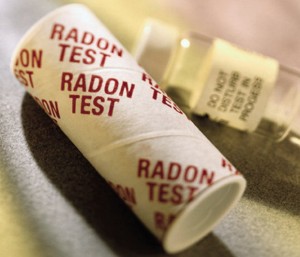 One of the first things we always discuss is whether or not radon gas is a problem in your home or residence. Unfortunately, that’s not the only place where it can wreak havoc on your health. Elevated radon gas levels can also exist inside the workplace. Since most of us while our days away at work it’s entirely possible for exposure to lead to serious health problems. Radon gas is the second leading cause of lung cancer in the United States and many countries over, after all.
One of the first things we always discuss is whether or not radon gas is a problem in your home or residence. Unfortunately, that’s not the only place where it can wreak havoc on your health. Elevated radon gas levels can also exist inside the workplace. Since most of us while our days away at work it’s entirely possible for exposure to lead to serious health problems. Radon gas is the second leading cause of lung cancer in the United States and many countries over, after all.
The recommended action limit as set by the U.S. EPA is 4.0 pCi/L. Exposure to that amount of radon gas on a daily basis is equal to smoking a half a pack of cigarettes per day. Every additional 15 pCi/L on top of that is equal to another full pack of cigarettes. Needless to say, the higher the radon gas levels in a building or residence the higher the risk for contracting lung cancer.
Radon Gas Is the Second Leading Cause of Lung Cancer
Not so worried because you think you can beat lung cancer? Think again. It has one of the highest mortality rates of any form of cancer. This is because there are no short term symptoms — there are no short term symptoms for radon gas exposure either. By the time most diagnosed patients have begun to experience any symptoms, the disease has progressed beyond a curable state. This is not said to dishearten anyone currently affected by the disease, but instead to point out how serious this issue is.
Radon is responsible for the deaths of more than 21,000 Americans each year. That means it’s not a contained issue and it’s a lot more severe than most would care to admit. Since radon is a naturally occurring gas released from elements such as Uranium when they undergo radioactive decay — and those exist commonly in soil and rock — it can be a problem anywhere. Even worse, it doesn’t matter if your neighbor’s home is safe or dangerous, your residence will most certainly have different levels. The same goes for the workplace and various businesses.
Radon gas seeps into a building through cracks in the foundation, walls and flooring and unless there’s a mitigation system installed to ventilate the gas it collects in abundance, and can cause the serious health issues described above. Worse yet, it’s odorless, colorless and tasteless which means it’s virtually indetectable. In fact, the only way to identify whether or not it exists is to test specifically for it.
Test Your Workplace for Radon Gas Today
We urge you to find out from employers or managers whether or not your workplace has been tested for the deadly gas. If you are in a position of authority, then have your business tested if it hasn’t been already. You can purchase a relatively inexpensive DIY radon testing kit from any local hardware store or online. If you don’t want to deal with the process yourself, you can also hire an experienced professional to do the work. If you go the latter route, the professional can also advise you what to do if elevated levels are discovered.
The sooner you have your workplace tested the better, because the longer you spend in a building or residence exposed to the silent killer the more chances you have of contracting lung cancer. That risk is boosted exponentially if you also smoke tobacco — of any kind.


